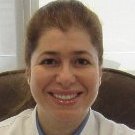.thumb.jpg.a858dd42891f6e0a00aae90a411db6b3.jpg)
Hugo Sanchez-Castillo replied to Sam Staples's topic in Community Leaders Posts
.thumb.jpg.a858dd42891f6e0a00aae90a411db6b3.jpg)
Hugo Sanchez-Castillo replied to Sam Staples's topic in Diversity Discussion


Bianca Williams posted a topic in Scientific Research Discussion

Bianca Williams posted an event in Community Calendar
Sam Staples posted an event in Community Calendar
Sam Staples posted an event in Community Calendar
Sam Staples posted an event in Community Calendar

Jayalakshmi Viswanathan replied to Sam Staples's topic in Community Leaders Posts

Jayalakshmi Viswanathan replied to Sam Staples's topic in Community Leaders Posts

Jayalakshmi Viswanathan posted a topic in Event Recaps

valeria muoio replied to Sam Staples's topic in Community Leaders Posts

valeria muoio replied to Sam Staples's topic in Diversity Discussion
Sam Staples posted a topic in Professional Development
Sam Staples posted a topic in Community Leaders Posts
Sam Staples posted an event in Community Calendar
Sam Staples posted an event in Community Calendar
Sam Staples posted an event in Community Calendar
